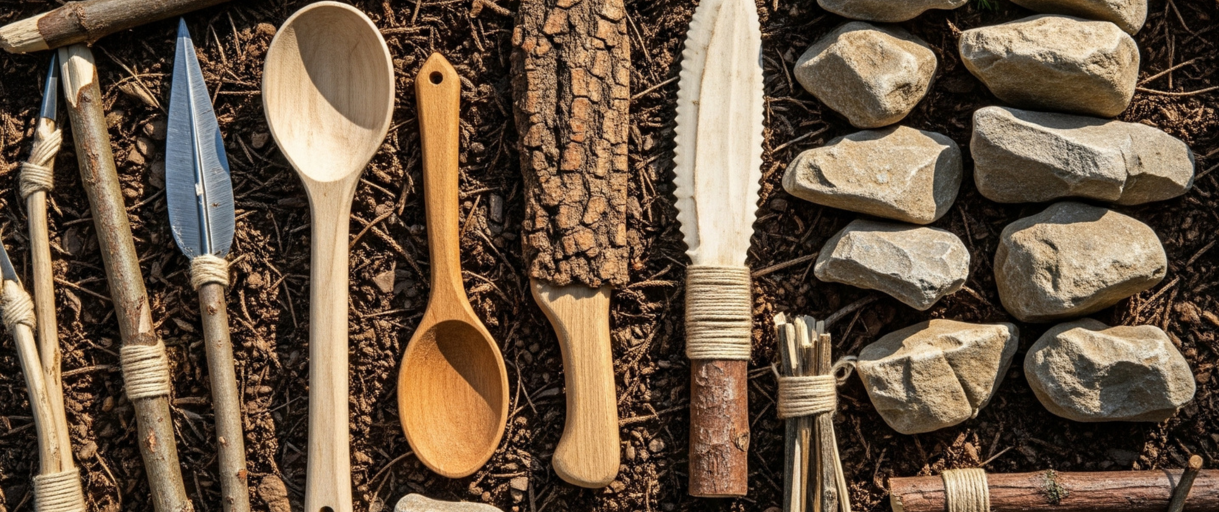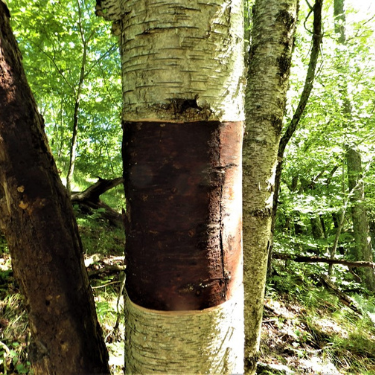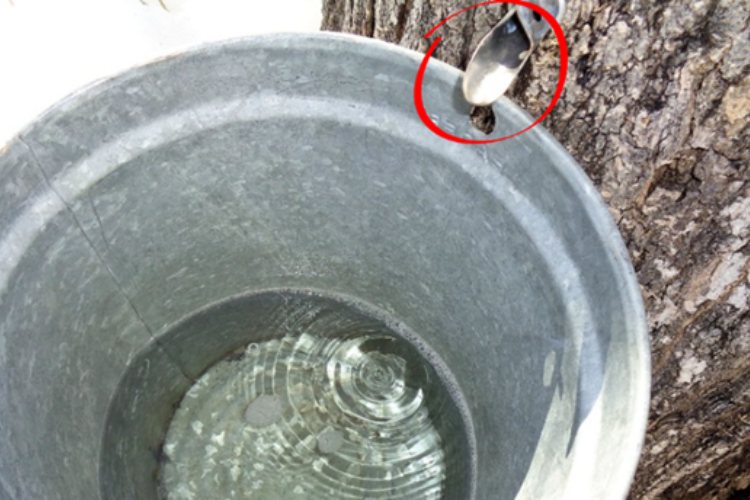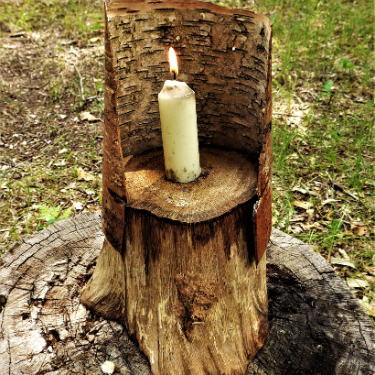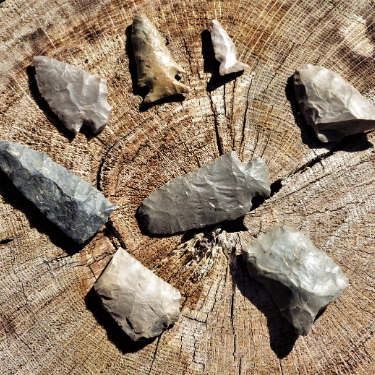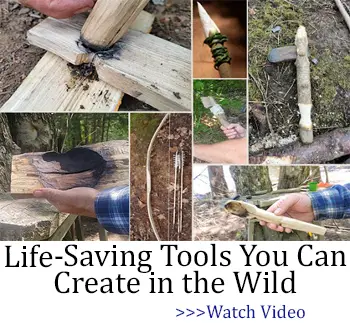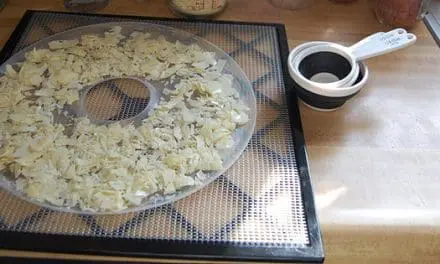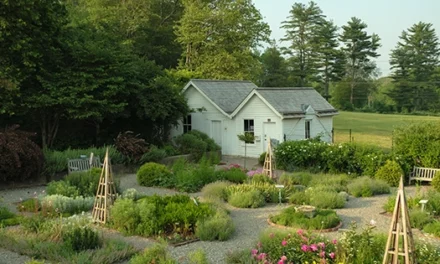When the grid fails and supplies run dry, you won’t have fancy tools waiting on a shelf. Out here, it’s bark, rocks, and trees or nothing. Your survival depends on knowing how to turn these raw materials into weapons, tools, and gear that can save your life. Without this knowledge, you risk being left helpless, exposed to the cold, hunger, and danger lurking just beyond your doorstep. This isn’t just DIY; it’s the difference between making it through and giving up.
Some tools are obvious. Sharpen a short branch and you have a digging tool. Sharpen a long branch and you have a spear for spear fishing. But then there are some very creative ideas that allow you to manipulate bark; identify and use certain rocks and even ways to combine ideas to make torches or flake flint or chert to make a knife.
We’re going to cover a range of tools, and the materials found in nature that make them possible. Once you start thinking this way you may find you start to see all sorts of possibilities with the natural materials around you. In actual fact, it’s that ability that allowed civilizationto grow and survive and survival is what it’s all about.
Here’s how to craft the tools that will keep you alive when everything else fails.
Natural Materials to Consider
It’s easy enough to say you can make tools from bark, trees and rocks, but there are certain types of materials that work much better for improvising things. Birchbark is a good example. It’s strong, flexible, even pliable and can be easily cut and shaped to a variety of purposes. Thick barks from trees like oak and maple may allow you to create shingles for a lean-to, but they are very uncooperative when you try to bend or shape them. Here’s a list of natural materials worth considering for a variety of tools:
🪨 Rocks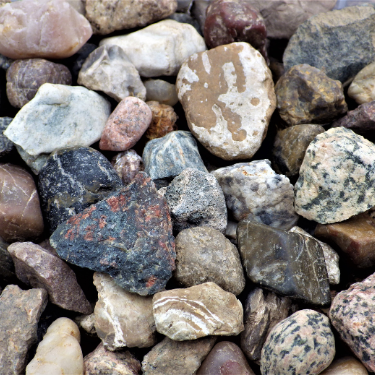
Flint and chert are the best rocks for making sharp edges. People have used them for thousands of years to make arrowheads, spear points, knives, and other tools that need a sharp edge.
Obsidian is another option. It’s volcanic glass and is so sharp it’s even been used in surgeries. The only problem is you won’t find obsidian unless you’re near a volcano.
Sandstone and limestone are softer rocks. They’re often smoothed by water in streams or rivers, so they have blunt edges but are nicely shaped. You can hold these rocks to hammer or pound things, or attach them to a stick to make a tool with more leverage.
A rusty piece of iron ore might seem strange, but it’s useful—not for making iron, but as a striker. When you hit iron ore against flint, it can create sparks to start a fire. So if you have flint but no metal tools, iron ore can help you get a fire going.
➡️How to Make the Ultimate Fire Starter That Burns Like Hell
Later in this article, we’ll talk more about how to work with different rocks to make tools.
🪵Bark
We already mentioned birch bark and if you have birch trees in your vicinity, you’re in luck. Ancient people used birchbark to make everything from shelters to canoes to backpacks and buckets. We’re going to explore some simpler possibilities like ladles, hats, candle lanterns, and would you believe -sunglasses.
Aspen bark is another possibility and shares many of the characteristics of birchbark. Even the bark of young maple trees or the higher branches of mature maples present a bark that is both smooth and pliable. And that’s the key with bark. If you can’t easily bend it or shape it could make for a fairly good replacement for a plate or as we mentioned -shingles for a lean-to or shelter but not much more
Slippery elm bark also presents possibilities for braided cordage from the bark strips due its flexibility and strength.
The bark on immature slippery elm trees with trunks up to 1-inch in diameter are best for cordage.
🌴Trees
Not all trees are the same — some have special qualities that are good to know about.
Willow trees have very flexible branches. People have used willow to make furniture, baskets, and even fish traps. The branches and bark can be braided into strong cordage, which is great for tying shelter frames or other uses.
Evergreen trees like pines are softwoods that are easy to work with. Pine sap, which sometimes drips from the tree, has been used as glue for thousands of years. The inner bark (called cambium) was even used as flour in Scandinavia. Pinecones and sap can also be used to make torch tips.
If You See a Pine Tree, Do This Immediately…
Most people walk right past a pine tree without giving it a second thought. But that tree might be hiding more than just sap for glue. It could be a survival food source hiding in plain sight.
Not a lot of people know this, but inside those pinecones are edible nuts packed with fat, vitamins, and minerals. You could live off them alone for days if you had to. The only catch? They’re not that easy to extract, unless you know this little trick that makes it almost effortless. And this is just one of the many overlooked survival skills you’ll discover right here.
Oak trees are hardwood and tough to shape without sharp tools, but their strength makes them great for pounding things like tent stakes or nails.
Osage orange trees aren’t common everywhere, but their wood is known for being strong and flexible. It’s been used for axe handles, bows, and tools that need both strength and some give.
Hickory is a favorite for tool handles like axes and hammers because it’s tough and shock-resistant.
🦴Bones and Antlers
This may seem like an odd consideration, but the tool potential is significant. Deer leave their antlers all over the ground when they shed them and if you can get to them before the mice do, you have tool making potential.
Antlers have traditionally been used for knife handles, as digging sticks and even for gardening to create rows or poke holes in the ground for seeds. Parts and pieces of the antlers are cut off to suit the tool.
Bones are another possibility, especially bird bones. Bird bones are thin, hollow with air spaces and many come to a sharp point. They have been used for thousands of years as needles for sewing with cordage, strips of leather or other animal skins or anything else that requires a stitch. Larger bones can also be used for hammering or pounding and even as tent stakes in case they didn’t find their way into the trunk before the camping trip.
Consider the Possibilities
The key is to picture the tool you need and then find natural materials around you to make it. Let’s start with tools made from bark, especially birch bark, which is very versatile.
🪵Tools from Birch Bark
Ladle
This ladle is made with a circle of birchbark and a stick with a slot cut into one end to hold it all together. It can make harvesting and drinking water from a natural water source like a spring easier or simply adding precise amounts of water to a pot or a recipe.
Most Filters Fail. This Tree Trick Doesn’t (Offers Clean Water 24/7, All Year-Round)
Make a simple ladle by cutting a circle of birch bark (6–10 inches wide). Fold it into a cup shape and use a split stick as a handle to hold it together. Perfect for scooping water or adding precise amounts to recipes.
Sunglasses
The Inuit used birch bark to make sunglasses that reduce glare from snow. Cut a strip about 2–3 inches wide and 6–8 inches long, fold it to fit your face, cut notches for your nose, and add small branches as ear supports. Cut short slits where your eyes go to see through.
Sun Hat
Cut a large birch bark circle (12–14 inches), slit from the center to the edge, fold into a cone, and secure with a small split stick. Add cordage or shoelaces to keep it on in the wind. It’s a great sun shield out in the wild.
Candle Lantern
The idea here is to use a piece of birch bark curved around a small stump of wood or the cut stump of a small tree to protect a candle from the wind and actually present increased luminosity from the white inner bark of birch bark.
Here’s one approach.
- Cut a piece of birch bark about 12-inches square and roll it and weigh it down to form a curve with the inner, white birch bark down.
- Place the rolled and curled birch bark around a small stump you’ve cut or the stump of a tree and let the curl hold it in place. You can fasten it with some cordage if you want.
- Put the candle in the birch bark nook and it should be protected from the wind and actually reflect a little more light due to the white bark. If the wind shifts, rotate the birch bark to protect the candle.
Torch
Make a torch by splitting a branch and stuffing birch or cedar bark inside. Pinecones coated with pine sap also work. The torch can burn 5–30 minutes and lights your way when it’s dark.
Other Uses
- Latrine shovel: Use a thick strip of bark to shovel dirt.
- Plate or platter: Any bark piece can hold wild food.
- Drinking cup: A birch bark drinking cup is nothing more than a cone similar to the ladle and hat that’s creased and folded in to form a watertight piece of bark in the shape of a cone. Bark from trees with thicker configurations like oaks and maples can also be used as shingles on a lean-to or other shelter type. Bark, when layered properly, repels rain and snow the way traditional shingles do.
- Shingles: Thick bark from oak or maple works great for shelter roofs, repelling rain and snow.
🪨Rock Tools
This goes back to the stone age when rocks were the primary source of tools at the early dawn of civilization. Here are some basic tools using rocks.
Pounding Tool
If it’s heavy and you can hold it in your hand and has a blunt end you’ve got a pounding tool. It makes quick work of tent stakes or anything that you might use a hammer or axe for.
Hammer, Sledge, Tomahawk
A step up from holding a rock is attaching it to a handle to give it more leverage. Depending on the rock you find or shape, you can make anything from a hammer to a sledge to an axe, although you’re going to need a large and sharp piece of flint if you’re hoping to actually cut any wood or trees.
Arrowheads, Knives, Spear Points
Flint and chert break with a sharp edge. Ancient people shaped these rocks with deer antlers to make sharp tools. Just breaking flint can give you a cutting edge sharp enough to cut rope.
Flour Grinding
Two flat stones can grind grains into flour—one as a base, the other to rub over the grains.
Spear Point
Flint and chert are volcanic rocks with a special property called conchoidal fracture, which allows them to break with very sharp edges. Ancient people used deer antlers to carefully chip, or “knap,” these edges to make spear points and cutting tools. Even just breaking a piece of flint can give you a sharp edge capable of cutting tough rope. If you find an actual ancient arrowhead or tool, you’ve hit the jackpot—a piece crafted hundreds or thousands of years ago ready for use.
Flour Grinding
Stone-ground flour began with two stones: one flat base stone and another stone rubbed over grains to crush them into flour. If you can find a large flat rock like slate or limestone and another stone with a flat edge, you can grind grains like wild rye into flour the old-fashioned way.
🌴Tools from Trees
The tool list from trees goes on and on but here are some basic tools and parts of tools you can make from various trees.
Fishing Spear
A long branch from just about any tree can be sharpened to make a spear for spear fishing. You could also use it to hunt frogs on the shoreline for a frog leg lunch. Here again, putting the point in the fire for a bit will harden the tip.
➡️How to Make Robinson Crusoe’s Fish Trap
Handles
Find a straight branch, split the end, insert your stone tool, and tie it tightly with leather or cordage. Wet leather shrinks as it dries, holding tools firmly.
Pounding Tasks
A 2 to 3 foot length of an oak log and be used for simple pounding tasks. That’s it. Just use the end of the log to pound stakes, nails or anything else. The oak will withstand a lot of abuse and can get simple tasks done.
Digging Stick or Dagger
Sharpen a hardwood branch (oak or maple) into a digging stick or dagger. Heating the tip in a fire hardens it.
There’s Way More
The telegram is simple. You can improvise just about anything if you’re lucky enough to have the natural materials available; the knowledge of how to put things together and the mindset that you can in fact do anything your putting your mind to. That’s what self-sufficiency and survival are all about and the more you exercise those creative survival muscles the better everything can be no matter what you encounter.
Off-Grid Tools You Should Look For At Flea Markets
75+ DIY Projects That Help You Survive Without Electricity (Video)

